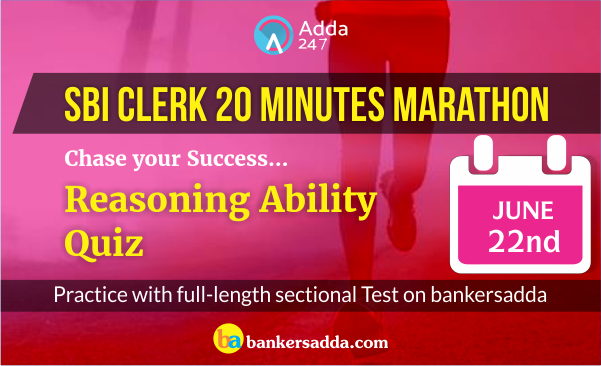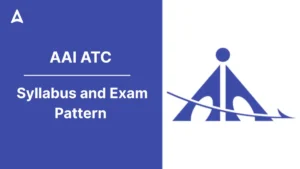A, B, C, D, E, F, G and H are sitting around a circular table facing the centre. H is third to the right of C and second to the left of E. B is not an immediate neighbour of H or C. F is second to the right of D and is an immediate neighbour of C. G is not the neighbour of E.
Q1. Who among the following is second to the right of C?
Q2. Who among the following is an immediate neighbour of H and E(both)?
Q3. In which of the following pairs the second person is sitting on the immediate right of the first person?
Q4. Who among the following is second to the left of B?
Q5. Who among the following is opposite D?
Directions (6-10): In these questions, the symbols @, #, $, * and © are used with different meanings as follows.
‘A @ B’ means ‘A is smaller than B.’
‘A # B’ means ‘A is either smaller than or equal to B’.
‘A $ B’ means ‘A is greater than B.’ ‘A * B’ means
‘A is either greater than or equal to B.’
A © B’ means ‘A is neither greater than nor smaller than B.’ In each question, three statements showing relationships have been given, which are followed by two Conclusions I and II. Assuming that the given statements are true, find out which conclusion(s) is/are definitely true.
Q6. Statements:
H # Q, Q @ F, L $ F
Conclusions:
I. L $ H
II. H # F
Q7. Statements:
J $ T, T @ V, V # M
Conclusions:
I. T # M
II. J © M
Q8. Statements:
U # D, D @ R, R © T
Conclusions:
I. U @ R
II. T $ D
Q9. Statements:
M * L, L $ K, K @ R
Conclusions:
I. M * R
II. M @ R
Q10. Statements:
J @ N, N © W, W $ V
Conclusions:
I. J © V
II. J @ W
Directions (11-15): Study the following information carefully and answer the questions given below:
P, Q, R, S, T and U are going to six different cities, viz Kolkata, Mumbai, Ranchi, Delhi, Jaipur and Pune, but not necessarily in the same order. All are going by three different modes of transport, viz Car, Train and Aeroplane. At least two persons travel by each mode of transport.
T goes to Jaipur by Car and P goes to Ranchi. Aeroplane is being used by the persons who are going to Mumbai and Pune. The one who is travelling by Train is not going to Delhi. Q is travelling by train and R is travelling by Car. P is travelling by train.
Q11. Who among the following goes to Delhi?
Q12. Which of the following pairs travels by aeroplane?
Q13. Which of the following combinations is true for Q?
Q14. U travels by which of the following modes?
Q15. Which of the following statements is definitely true?
Directions (16-17): Read the following information carefully and answer the questions given below:
A, B, C, D, E, F, G, H, and I are 9 family members among them only 3 are females. A is married to D. Each female has two sons and one daughter except one female. D is maternal grandmother of I who has no children. B who is daughter of A, is married. I is daughter of G. H and F are brothers and both are child of G.
Q16. Who among the following is a brother-in-law of G?
Q17. Who among the following is a grandson of D?
Directions (18-22): Study the following information carefully to answer the given questions.
Eight persons A, B, C, D, E, F, G and H are made to sit in two rows with 4 members in each row. A, B, E, G are facing south and sit in row X. D, H, C and F are facing North and sit in row Y. Each of the member of both the rows is working in four different companies viz. dabur, amul, parle and ITCs such that no two member of the same row works in the same company. D does not work in parle. B sits on immediate left of G. H does not works in parle and he does not sit at any ends of the row. The person of row Y who works in dabur faces the immediate neighbour of that person of row X who works in Amul. C is not an immediate neighbor of F. The person of row X who works in Amul sits to the immediate right of G. C faces the immediate neighbor of B, who does not work in amul. There is only one person between the persons who works in parle and ITC in both the rows. The person in row X who works in ITC faces the person of row Y who works in Amul. The person of row Y who works in parle faces A. F is not an immediate neighbour of H who sits immediate right of D.
Q18. Which of the following are the two persons are working in Amul?
Q19. Who among the following sits between D and C?
Q20. Which of the following option denotes a pair of two persons sitting diagonally opposite to each other?
Q21. Who among the following sits opposite to G?
Q22. Who among the following is sitting second to the right of B?
Directions (23-27): In these questions, relationship between different elements is shown in the statements. These statements are followed by two conclusions:
Q23. Statements:
All P are C .
No C is A.
Some A are B.
Conclusions:
(I)No P is A.
(II) Some B are not C.
Q24. Statements:
Some R is B .
All B are P.
No P is O.
Conclusions:
(I) No R is O
(II) some P is R.
Q25. Statements:
No A is B .
No B is C.
No C is D.
Conclusions:
(I)No A is D.
(II)some B are D.
Q26. Statements:
All P is R.
All R is C .
No R is T.
Conclusions:
(I) no P is T.
(II)some C being R is a possibility.
Q27. Statements:
Some M is T .
Some T is Q.
Some Q is C.
Conclusions:
(I) Some C is M.
(II)No C is M.
Directions (28-32): Study the following information carefully and answer the given questions: In a certain code
‘here is tunnel she stop’ is written as ‘isa kin ha ti la’,
‘he goes through tunnel’ is written as ‘nit ti pi sit’,
‘she goes here often’ is written as ‘sit la tin isa’ and
‘tunnel is far through here’ is written as ‘ha nit la ti fa’.
Q28. Which of the following is the code for ‘tunnel’?
Q29. What does code ‘sit’ stand for?
Q30. ‘he is often’ can be coded as ?
Q31. Which of the following is the code for ‘stop’?
Q32. Which of the following is the code for ‘goes here far stop’?
Directions (33-34): Study the information and answer the given questions:
There are seven family members namely A, B,C,D,E,F and G. A has 2 children F and E, who is married to D. D is father of G. B is mother of F. C is brother in law of B.
Q33. How is F related to C.?
Q34. How is A related to D?
Q35. There are 5 books i.e. P, Q, R, S and T having different number of pages. Q has more pages than S&T only. R does not have the most numbers of pages . Which book has the 2nd least number of pages?





 GA Capsule for SBI Clerk Mains 2025, Dow...
GA Capsule for SBI Clerk Mains 2025, Dow...
 The Hindu Review October 2022: Download ...
The Hindu Review October 2022: Download ...
 AAI ATC Syllabus 2025 and Exam Pattern
AAI ATC Syllabus 2025 and Exam Pattern





